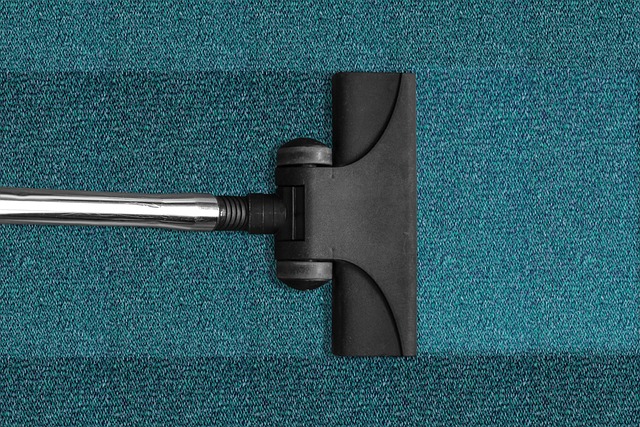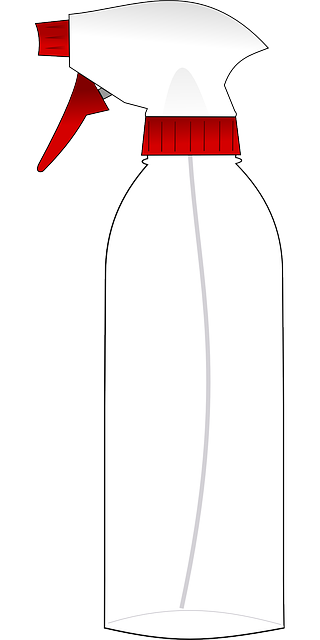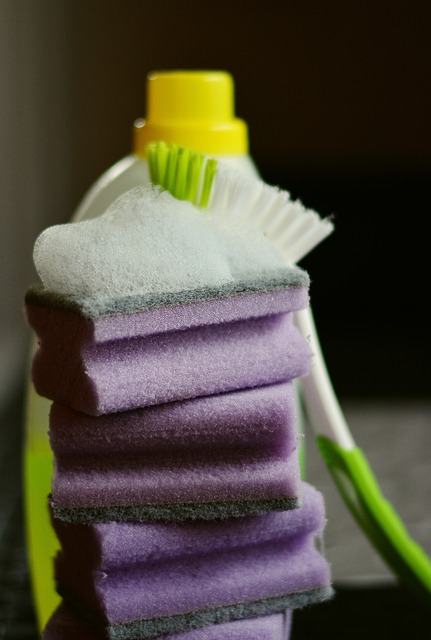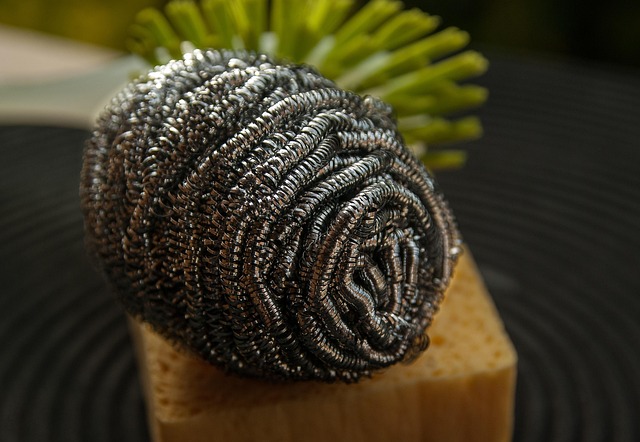Deep cleaning carpets and rugs is essential for maintaining indoor air quality, extending flooring lifespan, and fostering a healthier environment. This process involves removing embedded dirt, dust, allergens, and bacteria, preserving carpet fibers, and restoring aesthetics. Techniques include steam cleaning, dry cleaning, spot treatments, UV sanitization, and foam cleaning. Preparation tips before cleaning include furniture removal, thorough vacuuming, and good ventilation. Choosing the right cleaning products based on fabric type, stains, and health benefits is crucial, with natural, non-toxic cleaners preferred. Regular post-cleaning maintenance and avoiding common mistakes like over-saturating fibers ensure optimal results while preserving carpet integrity.
Deep cleaning your carpets and rugs isn’t just about removing visible dirt; it’s an essential step in maintaining indoor air quality and preserving your textiles. Regular deep cleaning offers numerous benefits, from enhanced aesthetics to improved health and longevity of your flooring. This comprehensive guide explores various deep cleaning methods, preparation tips, product choices, post-cleaning maintenance, and common pitfalls to ensure optimal results.
Understanding the Importance of Deep Cleaning

Deep cleaning carpets and rugs is an essential practice that often goes overlooked until it’s too late. Regular surface cleaning can only do so much; it’s the deep cleaning process that truly restores your flooring to its original condition. This method delves below the surface, removing deeply embedded dirt, dust, allergens, and even bacteria. In today’s world, where people spend a significant amount of time indoors, maintaining clean and healthy floors is crucial for overall well-being.
Carpets and rugs act as massive collectors of indoor pollutants, which can have adverse effects on your health. Deep cleaning helps to mitigate these risks by eliminating the buildup of harmful substances. It’s not just about aesthetics; it’s about ensuring a safe and comfortable living or working environment. By investing in regular deep cleaning, you protect your investment in flooring, extend its lifespan, and create a more pleasant ambiance for all occupants.
The Benefits of Regular Deep Carpet and Rug Cleaning

Regular deep carpet and rug cleaning offers numerous benefits that extend far beyond mere aesthetics. By removing deeply embedded dirt, dust, allergens, and bacteria, it significantly improves indoor air quality, a factor crucial for maintaining good health, especially for those with respiratory conditions or allergies. The process helps to preserve the fibres of your carpets and rugs, prolonging their lifespan and preventing premature wear and tear.
Moreover, deep cleaning can enhance the overall appearance and vibrancy of your flooring. It removes stubborn stains and discolours, restoring the original beauty of your carpets and rugs. This not only adds value to your home but also contributes to a more welcoming and aesthetically pleasing living environment. Regular deep cleaning is an investment in both the health of your family and the longevity of your valuable floor coverings.
Types of Deep Cleaning Methods for Carpets and Rugs

Deep cleaning carpets and rugs is an essential part of maintaining their longevity and aesthetic appeal. Several methods achieve this, each with its own set of benefits and applications. One popular technique is steam cleaning, which involves injecting hot water and detergent into the carpet fiber, then suctioning out the dirty solution. This method is highly effective for removing deeply ingrained dirt and grime while also killing bacteria and mites.
Another approach is dry cleaning, suitable for delicate fabrics or carpets that cannot withstand high moisture levels. It uses specialized powders or solutions that attract and encapsulate dirt particles, leaving them to be brushed away. This process is gentler on the carpet but may not be as thorough in removing stubborn stains compared to steam cleaning. Additionally, some modern methods include spot treatment with enzyme-based cleaners for specific areas, UV cleaning for sanitizing, and foam cleaning for deep penetration without excessive water usage.
Preparing Your Home Before a Deep Clean

Before scheduling a deep carpet and rug cleaning, it’s essential to prepare your home for the process. Start by removing all furniture from the rooms to be cleaned, as this facilitates easier access to every nook and cranny. Vacuum thoroughly to eliminate loose dirt, dust, and debris that might have accumulated under pieces of furniture or along baseboards.
Clear away any valuable items or breakables that could be displaced during the cleaning process. Move plants indoors if possible, and cover delicate surfaces like tables and shelves with protective covers. Ensure good ventilation throughout your home, as this aids in the quick evaporation of cleaning solutions and minimizes the impact of residual chemicals.
Choosing the Right Cleaning Products for Optimal Results

When it comes to deep carpet and rug cleaning, selecting the right cleaning products is paramount for achieving optimal results. It’s essential to consider factors like the type of fabric, any specific stains or odours, and the overall health benefits for your home or space. Natural, non-toxic cleaners are ideal for deep cleaning as they are gentle on both the fibres of your carpets and the air quality within your environment.
For instance, using enzyme-based detergents designed to break down organic compounds is a smart choice. These products are effective in removing stubborn stains without leaving behind harsh chemicals or residues that can recolour or damage your carpets over time. Additionally, opting for steam cleaning methods, which infuse hot water and gentle pressure to extract dirt and grime, ensures a thorough deep clean while also preserving the integrity of your rugs and carpets.
Tips for Maintaining a Clean Carpet or Rug After Deep Cleaning

After undergoing deep cleaning, maintaining your carpet or rug’s cleanliness is essential to prolong its life and preserve its beauty. One effective tip is to regularly vacuum using a high-efficiency particulate air (HEPA) filter vacuum cleaner. This helps remove loose dirt and allergens trapped in the fibers. Additionally, immediately addressing any spills or stains is crucial; blotting them with a clean cloth instead of rubbing can prevent further penetration into the fabric.
Rotating your rugs and carpets regularly also plays a significant role in equalizing wear and tear. This simple practice allows different areas to receive equal exposure to foot traffic, sunlight, and environmental factors, thereby slowing down the aging process. Lastly, consider using area rugs inside your home, especially in high-traffic zones, as they act as a protective barrier, catching debris before it reaches your main carpets, thus reducing the need for frequent deep cleaning.
Common Mistakes to Avoid During the Deep Cleaning Process

When deep cleaning carpets and rugs, it’s easy to make mistakes that can lead to less-than-satisfactory results. One common blunder is over-saturating the fiber with water or cleaning solutions, which can cause excessive moisture retention and potentially damage the material. It’s crucial to maintain a balanced approach, using just enough water to effectively clean without overwhelming the fibers.
Another mistake to avoid is neglecting to test cleaning solutions on a small, inconspicuous area first. Different carpets and rugs have unique fiber types and finishes that may react differently to various cleaning agents. Always spot-test first to ensure the solution won’t discolor or damage the fabric. Additionally, failing to vacuum thoroughly before deep cleaning can result in less effective cleaning, as loose dirt and debris can impede the cleaning process. Regular pre-vacuuming is essential for optimal deep cleaning outcomes.
